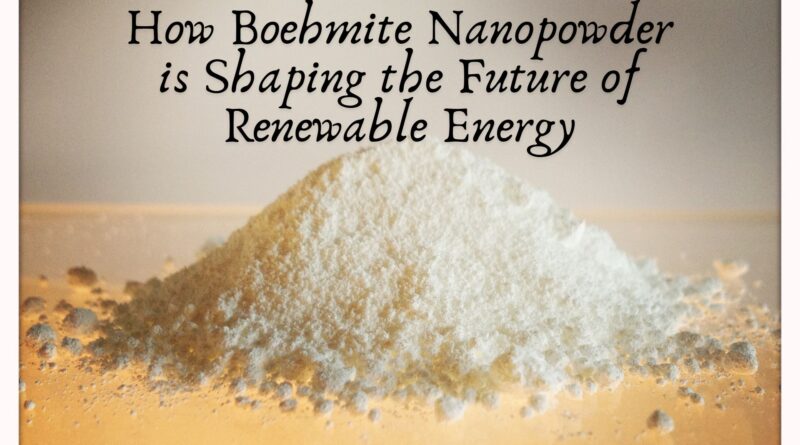How Boehmite Nanopowder is Shaping the Future of Renewable Energy
Introduction
In the quest for cleaner, more efficient energy solutions, boehmite nanopowder is emerging as a pivotal player. Known for its unique properties and versatility, this advanced material is making waves across various sectors, including renewable energy. As we explore the impact of boehmite nanopowder, we’ll delve into its role in enhancing energy storage, improving solar technologies, and facilitating more efficient energy conversion processes.
Understanding Boehmite Nanopowder
Boehmite, an aluminum oxide hydroxide, is a key component in the synthesis of alumina. When reduced to nanopowder form, its properties change significantly. These nanoparticles exhibit enhanced surface area and reactivity compared to their bulk counterparts. This makes them highly effective in various applications, including catalysis, energy storage, and environmental protection.
Boehmite Nanopowder in Energy Storage
Enhanced Battery Performance
One of the most promising applications of boehmite nanopowder is in battery technology. The nanopowder can be used to improve the performance of batteries, particularly in lithium-ion and sodium-ion batteries. Its high surface area allows for more efficient ion transport, which can lead to increased energy density and faster charging times. Additionally, boehmite’s stability and thermal resistance make it a suitable candidate for high-performance batteries.
Supercapacitors
Supercapacitors, which are used for rapid energy storage and discharge, benefit from the incorporation of boehmite nanopowder. The material’s large surface area and excellent conductivity enhance the supercapacitor’s ability to store and release energy quickly. This is crucial for applications requiring bursts of power, such as in regenerative braking systems in electric vehicles.
Advancing Solar Technologies with Boehmite Nanopowder
Photocatalysis and Solar Cells
Boehmite nanopowder shows great promise in the field of photocatalysis, a process where light is used to accelerate chemical reactions. In solar energy applications, this can translate to improved efficiency in converting sunlight into usable energy. By integrating boehmite nanoparticles into solar cells, researchers are aiming to enhance light absorption and improve overall cell efficiency.
Solar Heat Collectors
In solar thermal applications, boehmite nanopowder can be used to develop advanced heat collectors. The nanopowder’s ability to enhance thermal conductivity helps in the efficient capture and transfer of solar heat. This can lead to more effective solar thermal systems, which are crucial for harnessing renewable energy from the sun.
Boehmite Nanopowder in Hydrogen Production
Catalytic Water Splitting
The production of hydrogen through water splitting is a key area of interest for renewable energy. Boehmite nanopowder has shown potential as a catalyst in this process. Its high surface area and reactivity improve the efficiency of water splitting, leading to more effective hydrogen production. This could be a significant step forward in developing sustainable hydrogen energy systems.
Fuel Cells
In fuel cell technology, which converts chemical energy directly into electricity, boehmite nanopowder can be used to enhance the performance of catalysts. Improved catalyst efficiency translates to better fuel cell performance, which is essential for the development of clean energy solutions.
Environmental Impact and Sustainability
Boehmite nanopowder’s role extends beyond just technical applications; it also has environmental implications. The material is derived from aluminum ore, which is abundant and relatively environmentally friendly compared to other materials. Additionally, its use in energy technologies contributes to the reduction of carbon emissions and the promotion of renewable energy sources.
Challenges and Future Directions
Despite its potential, the use of boehmite nanopowder in renewable energy is not without challenges. Issues such as the cost of production, scalability, and integration into existing technologies need to be addressed. Ongoing research and development efforts are focused on overcoming these hurdles to maximize the benefits of boehmite nanopowder.
Conclusion
Boehmite nanopowder represents a significant advancement in the field of renewable energy. Its unique properties and versatility are driving innovations in energy storage, solar technologies, and hydrogen production. As research progresses and technologies evolve, boehmite nanopowder is poised to play a crucial role in shaping the future of clean and sustainable energy solutions.


